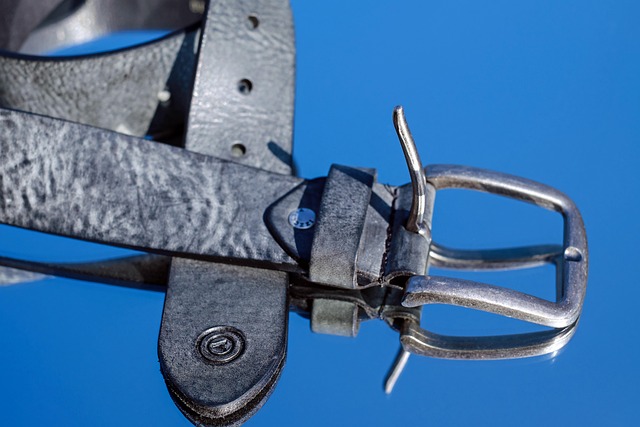Understanding and maintaining your vehicle's timing belt is crucial for optimal performance and preventing costly repairs. Regular checks, timely replacement based on mileage or vehicle condition, and selecting high-quality compatible belts ensure engine synchronization and prevent damage. Avoiding DIY installation without proper skill and delaying repairs minimizes risk of breakdowns and permanent engine damage. Proactive maintenance extends vehicle lifespan and enhances driving experience.
Prevention is key when it comes to maintaining your vehicle, especially regarding your car’s timing belt. A well-timed maintenance strategy can save you from costly repairs and potential engine damage. This article guides you through essential steps to ensure your timing belt’s longevity. Learn how to identify signs of wear, choose the right replacement part, and plan the repair at the best time. We’ll also highlight common mistakes to avoid and offer tips for ongoing prevention, empowering you with knowledge to select the optimal Timing Belt Replacement.
- Understanding Your Vehicle's Timing Belt
- Identifying Wear and Tear Indicators
- Choosing the Right Replacement Part
- Selecting the Optimal Time for Repair
- Common Mistakes to Avoid During Replacement
- Maintenance Tips for Future Prevention
Understanding Your Vehicle's Timing Belt

Understanding your vehicle’s timing belt is crucial in maintaining its optimal performance and preventing costly repairs. The timing belt, also known as the camshaft belt, synchronizes the rotation of the engine’s crankshaft with the camshaft, ensuring valves open and close at precisely the right moments during each cylinder’s cycle. Over time, this vital component can wear out or break, leading to severe engine damage if not replaced promptly.
Selecting the right timing belt replacement is essential for your vehicle’s longevity. While the cost of a new timing belt varies depending on the make and model, it’s crucial to consider factors beyond just “how much does a new timing belt cost?” Regular maintenance checks and adhering to the best practices for timing belt care, such as checking tension regularly and replacing it at recommended intervals (often between 60,000 to 100,000 miles), can help prevent unexpected failures. Remember, a well-maintained timing belt contributes significantly to your car’s overall performance and reliability, even if the alternator belt replacement is not included under your car warranty.
Identifying Wear and Tear Indicators

Regularly checking for signs of wear and tear is an essential part of preventative car maintenance. The timing belt, a crucial component in your engine’s operation, requires special attention. Over time, this vital part can show symptoms of damage or degradation, signaling the need for replacement. Some key indicators include cracks, fraying, or stretched areas along the belt’s surface, as well as unusual noise during engine operation, which might suggest a loose fit.
When contemplating a Select Timing Belt Replacement, understanding when to replace it is crucial. Many mechanics recommend replacing it every 60,000 to 100,000 miles, but this can vary based on your vehicle’s make and model, as well as driving conditions. Comparing timing belt replacement to chain belt alternatives using the right tools for a DIY timing belt change can be beneficial for budget-conscious owners. Keep in mind that while some tasks may be tackled by amateurs, complex procedures like replacing a timing belt often require professional expertise to avoid potential engine damage.
Choosing the Right Replacement Part

When addressing vehicle maintenance, particularly with crucial components like the timing belt, choosing the right replacement part is paramount. The timing belt, which synchronizes the engine’s internal components, plays a vital role in ensuring your car runs smoothly and efficiently. Therefore, selecting a high-quality, compatible timing belt is essential for preventing unexpected breakdowns and costly repairs.
Opting for a do-it-yourself (DIY) timing belt installation can be tempting for those who enjoy automotive work. However, it’s crucial to consider the precision required for this task. Timing belts must be installed with meticulous care to avoid damaging other engine parts. Moreover, regularly scheduling car maintenance, including checking for signs of a bad timing belt like noise or engine misfire, can help prevent serious issues. For those unsure or uncomfortable performing this service themselves, many local auto shops offer reliable timing belt replacement services, ensuring peace of mind and the job’s correctness.
Selecting the Optimal Time for Repair

When considering the best practices for timing belt maintenance, selecting the optimal time for repair is paramount. The decision to replace your timing belt shouldn’t be based solely on the passing of time; instead, it’s crucial to consider the overall health of your vehicle and driving patterns. Many mechanics recommend replacing the timing belt every 60,000 to 90,000 miles, but this can vary depending on the make and model of your car.
One key factor in determining when to replace your timing belt is the fast turnaround time for timing belt replacement. Proactive maintenance ensures that any potential issues are addressed before they cause costly breakdowns or irreparable damage. By staying attuned to your vehicle’s needs and following recommended service intervals, you can safeguard against unexpected troubles and keep your car running smoothly.
Common Mistakes to Avoid During Replacement

When it comes to timing belt replacement, avoiding common mistakes is as crucial as knowing when to select the procedure. One frequent blunder is postponing the replacement until a breakdown occurs, which can lead to more extensive and costly repairs. Regular maintenance checks are key; these allow for early detection of wear and tear, enabling timely intervention. Neglecting this preventive measure can result in belt failure, causing significant engine damage.
Another mistake to steer clear of is attempting DIY timing belt replacements unless you’re a seasoned mechanic. This task requires precision and specialized knowledge. Incorrect installation or tight tolerances can lead to premature failure. It’s advisable to seek the services of a timing belt specialist near me for accurate assessment and efficient timing belt replacement, ensuring your vehicle’s longevity. Remember, an affordable timing belt repair is always preferable to a preventable, costly breakdown.
Maintenance Tips for Future Prevention

Regular maintenance is essential to prevent future issues. One critical aspect often overlooked is the timing belt—a vital component in many vehicles’ engines. The recommended select timing belt replacement interval varies depending on the make and model, but it’s crucial to stay vigilant. Regular checks can help identify any wear and tear, allowing for timely alternator belt replacement if needed.
To ensure optimal engine health, consider learning do-it-yourself timing belt installation techniques. This knowledge empowers you to address potential problems proactively. By staying proactive with maintenance, you contribute to the overall longevity of your vehicle, saving costs in the long run and ensuring a smoother driving experience.
Preventive maintenance is a proactive approach that saves time and money in the long run. By understanding your vehicle’s timing belt, recognizing wear and tear, choosing the right replacement part, and selecting the optimal repair time, you can avoid costly breakdowns. Remember, regular maintenance and prompt action when issues arise are key to keeping your vehicle in top shape. When it comes to selecting Timing Belt Replacement, make informed decisions based on expert advice and quality parts to ensure a smooth ride ahead.
